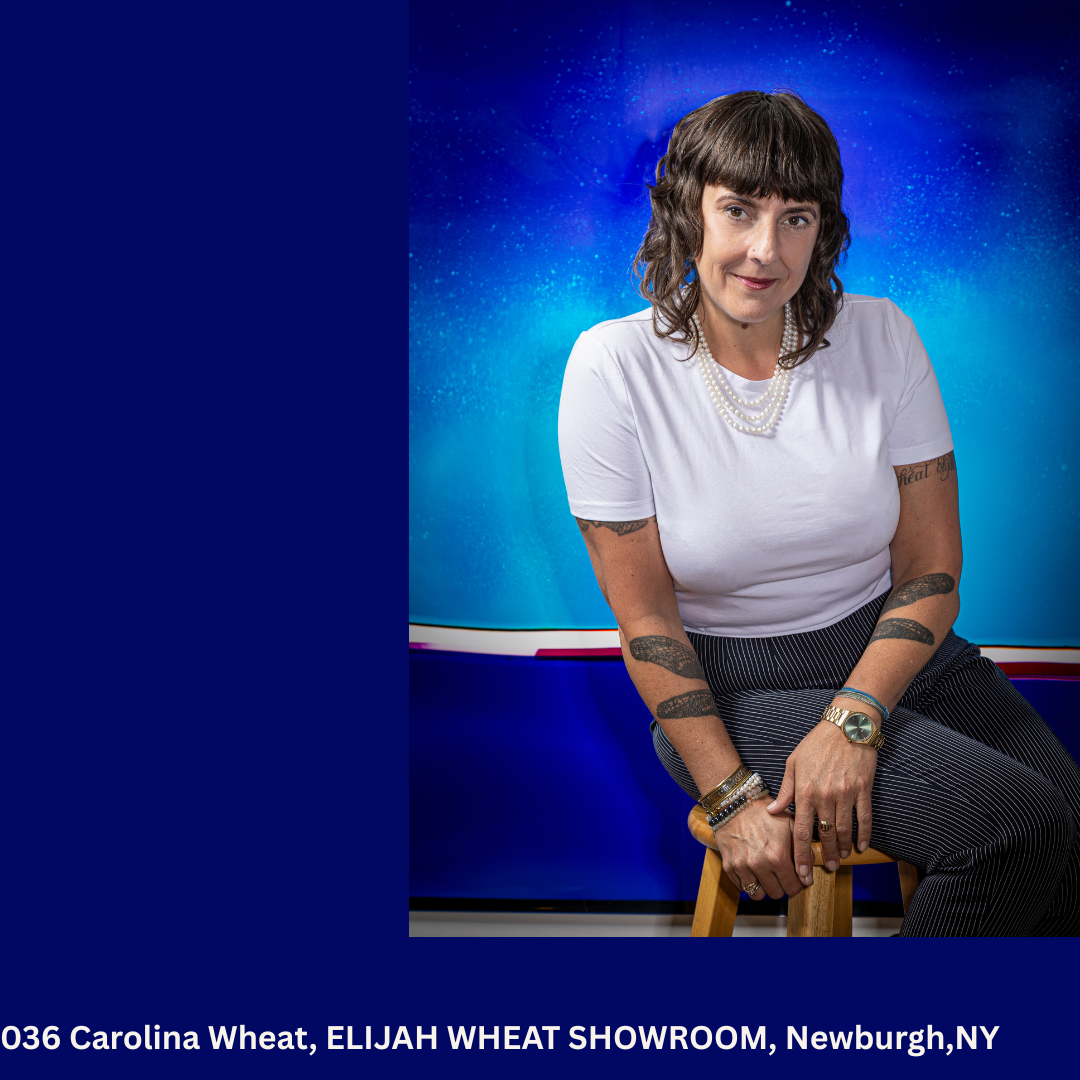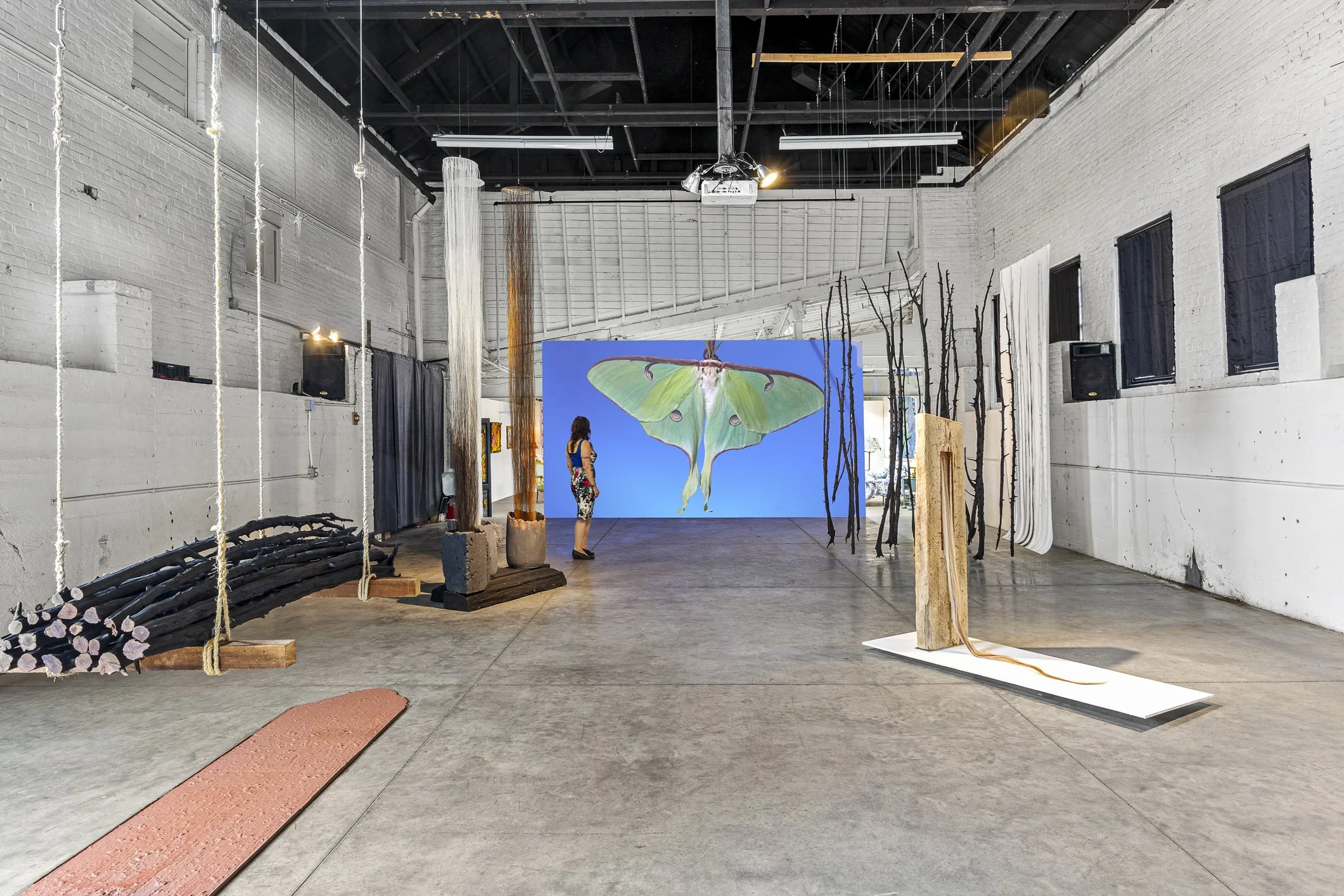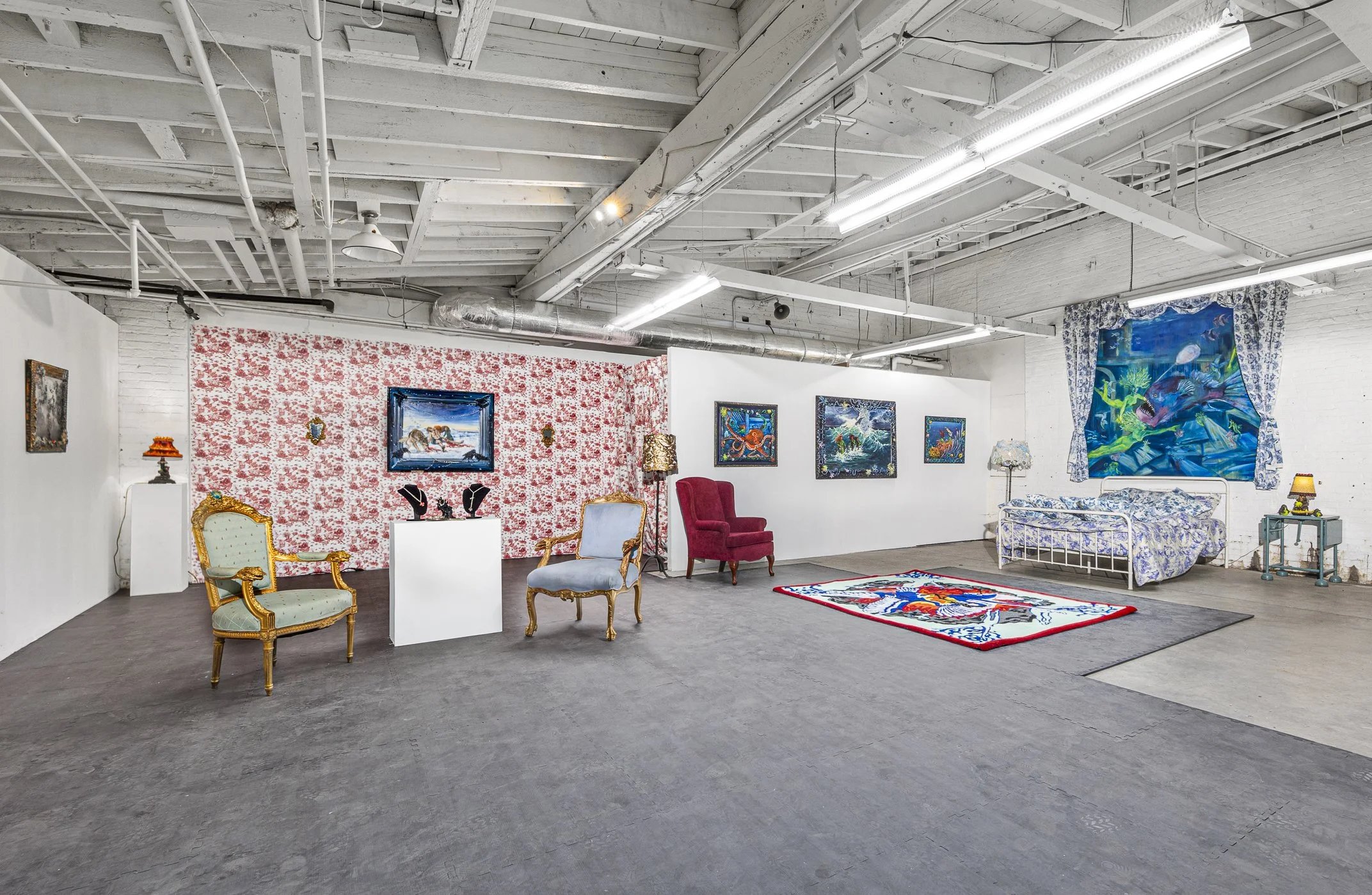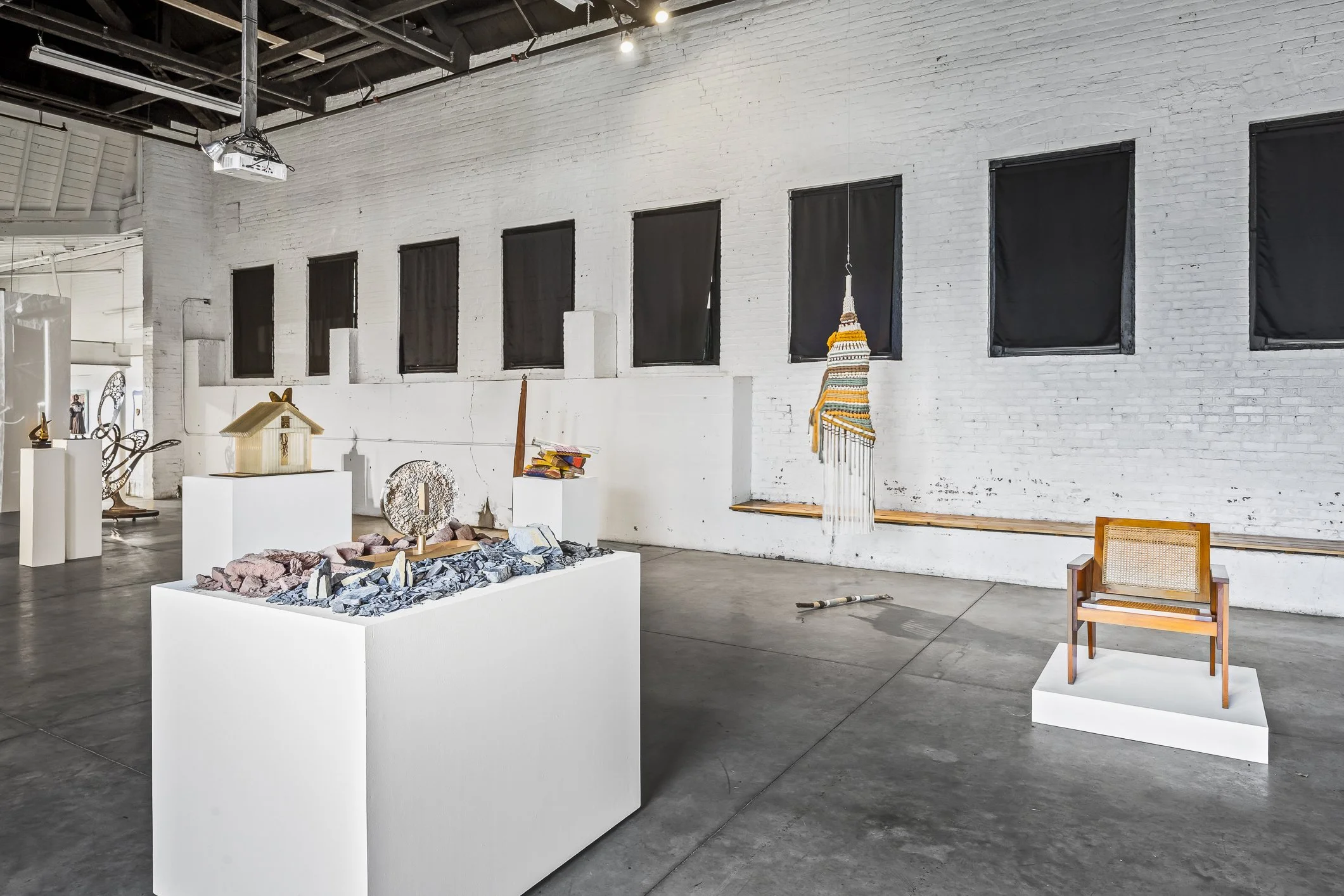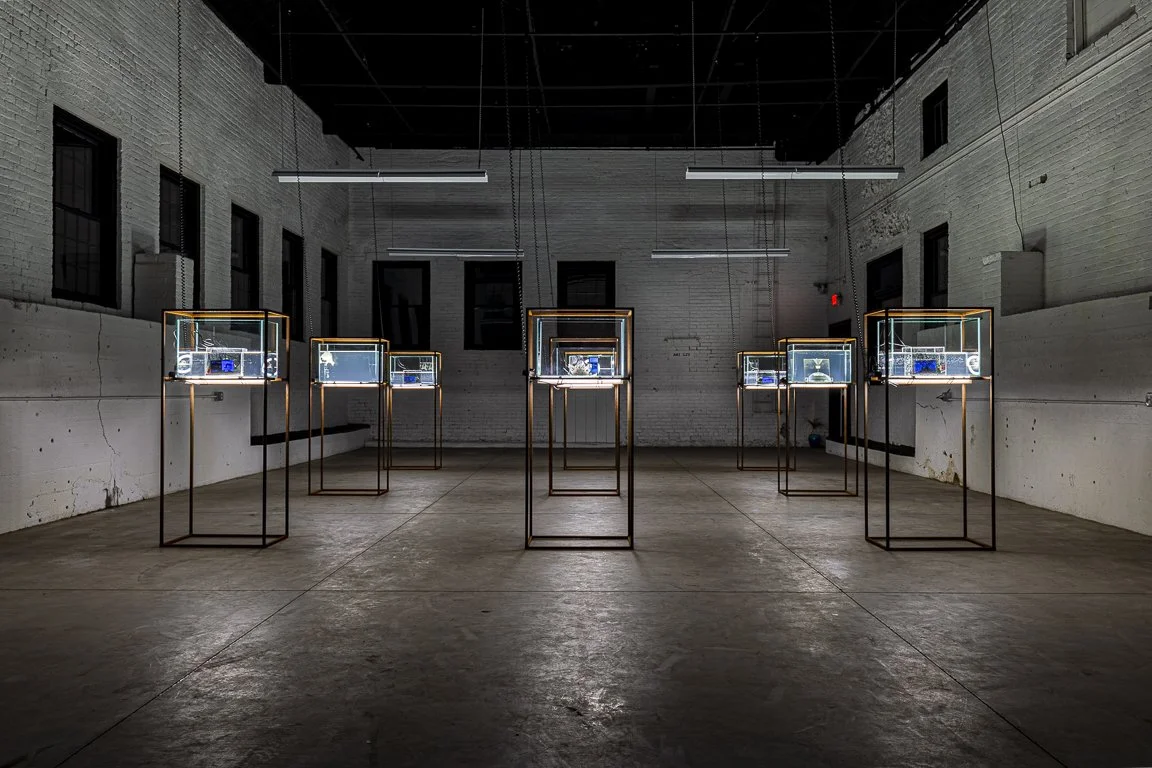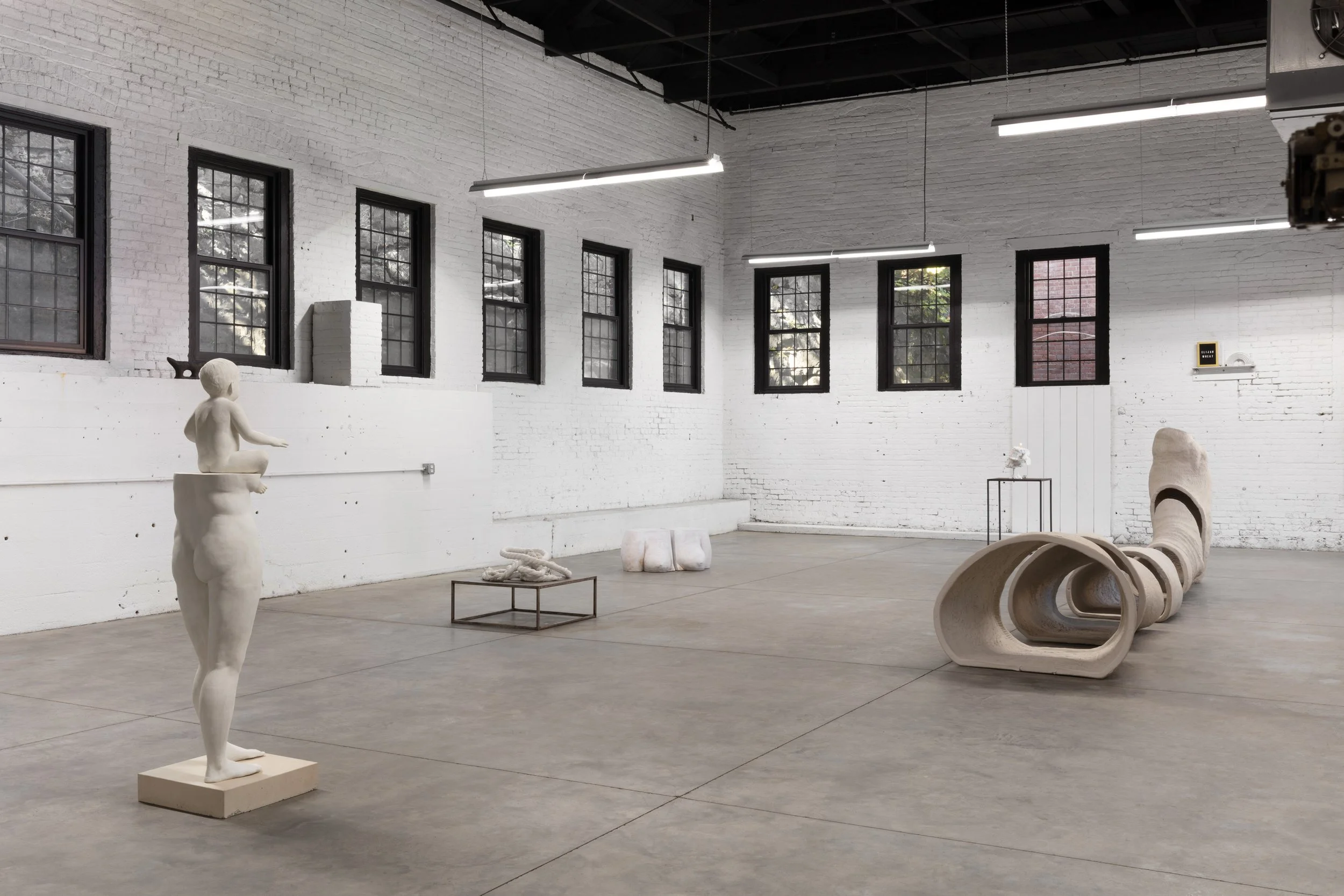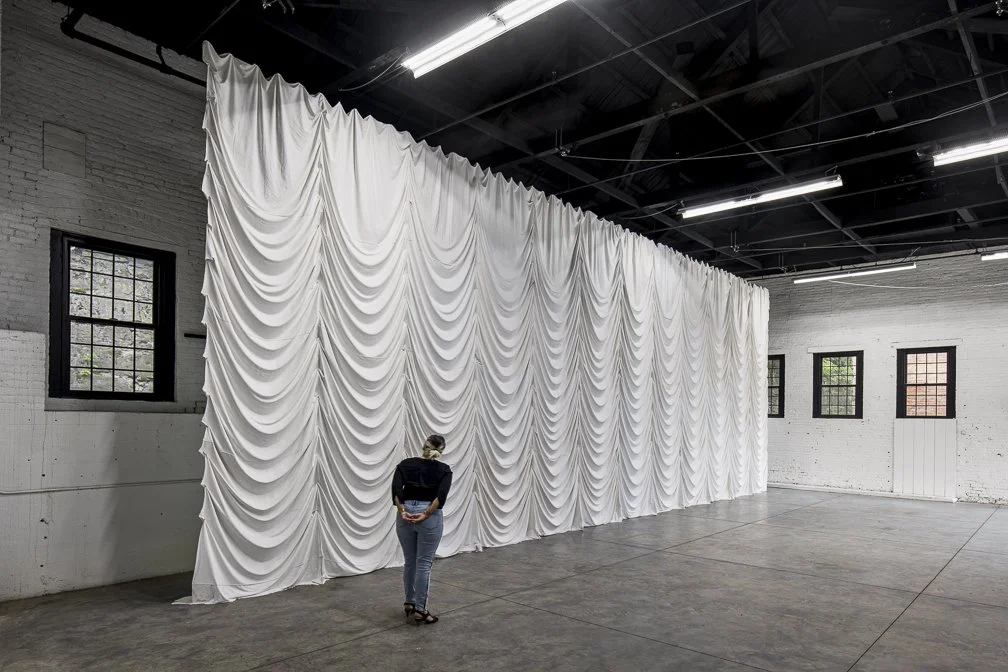Hot Coffee conversation with gallerist Carolina Wheat, Elijah Wheat Showroom, Newburgh, NY
Published Monday, August 25, 2025
When you visit Newburgh, New York, for the first time, the historical facades (including George Washington’s headquarters from 1850), large and comfortable brownstones, create arresting, yet poignant counterpoints to the surrounding urban decay of deserted and slightly abandoned streets. The town was once a lively spot on the Hudson River, en route between New York and Albany, yet its prominence has diminished since the 1960s, resulting in rising crime and blight. Yet, the locals are very active in their artistic and cultural missions to revive the scene here by bringing in politically daring and aesthetically arresting exhibitions. Carolina Wheat is one of them, running the Elijah Wheat Showroom. I had the pleasure of visiting this gallery twice, and both times it was for the exhibitions of Hudson River Valley artists. I wanted to ask Carolina a few questions about her vision and her challenges.
Nina: Imagine you are in your favorite coffee or tea spot. Where is it? What are you drinking? What are the three things you see right now?
Carolina Wheat: My favorite coffee spot: I'm on the back patio in my Beacon, NY 'Sesame Street Brownstone', looking over my left shoulder and the privacy gate to the tip of the humble mountain to the East. I see a maturing Acacia plant, of which my strong-willed daughter is named after. The last thing I see are my aging hands in this material form, cupping a favorite mug with Phillz roast, Philtered Soul, cream, and mushroom/adaptogens (how pseudo-bougie! just a delicious ideal)--a remnant of the New Museums Ugo Rondinone's external text facade and public art work, exclaiming in rainbow: HELL YES!
Installation view, Compact, Relaxed & Intact: Millicent Young and Virginia L. Montgomery. Image courtesy of Elijah Wheat Showroom.
Nina: Please tell us more about your gallery, or rather, the independent space, Elijah Wheat Showroom, located in an old factory in Newburgh, New York, on the bank of the Hudson River. What prompted your decision to open this space? How do you choose your exhibitions? Why Newburgh as the location for the space? Did your mission change over time?
CW: Besides the potent history of the steel industry in Newburgh, the city’s past is decorated with ‘firsts.' The space is activated fittingly through the last 11 exhibitions as Elijah Wheat yet once served as the titular start of Newburgh’s Industrial Age. The spirits on the grounds of Newburgh’s Steam Works, a landmark on the Hudson River, continue to produce boilers, lawnmowers, haul cotton, tan leather, sew bags. A longtime staple of one of Newburgh’s most employed and productive spaces, 180 years later, it stands as Elijah Wheat Showroom and continues to coalesce with working people in the Hudson Valley. Perhaps the landlord would've made more capital by storing boats and jet skis on the poured concrete floor and charcoaled ceilings. However, our mission has always been to bring varied people together, engage in socio-political conversations, act as a platform for change, for art-activism and as an artist-focused space that is unafraid to present work outside a purely commercial focus. So, this speak-easy gallery, hard-to-find location on the river seemed apropos to activating an already awesome piece of historic architecture. The space speaks to me, as the curator, and follows through with exhibitions that are precinct, relevant and woven into a current timeline instigating conversations that we must have as a community of co-creators. There are so many otherworldly ways that assist in the decisions of what is shown when, perhaps that is our secret sauce, to listen to the zeitgeist and our intuition to bring these of-the-moment exhibitions to our community.
Installation view, Girls at the End of the World: Jessica Hargreaves. Image courtesy of Elijah Wheat Showroom.
Nina: There has been a revival in the upstate New York art spaces this summer. What do you think about this process, and how do you think it will develop over time?
CW: We couldn't be more delighted to have our space on the Hudson River in Newburgh, NY. We are so honored to have been moved up from the city with an Orange County Relocation Grant from 2015, and to have a studio and kunsthalle-like space to share Art-World-Love with as many witnesses as we can gather. This historic city becomes us, as mentioned, we feel remarkably blessed to be part of the history, to continue making marks with the greats from yesteryear. We find peace within the purple mountains' majesty, and we find awe in the sublime scenery and sunsets. Time continues to move forward, yet there's a sweet level of presence, coupled with the rich history (DIA Beacon and Storm King Art Center certainly validate our geo-location too), the vast number of creatives and established institutions that surround us.
Installation view, Collateral Magic: Johannah Herr (at Mother-in-Law's). Image courtesy of Elijah Wheat Showroom.
Nina: You have worked in very different positions within the art industry, including working with the estate of Gordon Matta-Clark, director of Admissions at Parsons in Paris and New York, and other institutions. You also worked as an art writer and have produced radio shows. Given all these perspectives, what do you think is happening with the global art system? Is it transforming or just recalibrating under the new shrinking markets?
CW: Nina, thanks for asking. We are often pigeon-holed into positions that were pre-programmed to spend oodles on a credential, with little training on any professional practices, and then you run into the 'field.' Likely, one is learning on the job and accepting a low salary due to succumbing to the fact that arts and artists are an important part of culture, but not high-paying gigs. We do it because we love it, right? To see the science about how very critical our creative practices in human evolution are, it's a travesty that the arts continue to push a 'labour of love' mentality. We ask for exposure, we work tirelessly for attention, press, accepting the rhetoric that arts adjacent administrators, curators, sales assistants, handlers, etc, are all doing it for the higher good. Doing it because we believe in art, that we're beholden to this idea that the invisible labor is what lifts a career. The market is changing, sure. It's always changing; the only constant is change, right? When these giant Blue-Chip white cubes begin waxing poetic about down-sizing and moving towards a more family-friendly model (closer to the artists, more individualized time, programming, research, and investigation), it seems as if it was like that before the market went bonkers with speculation and luxury trends. It's certainly recalibrating.
Funny, I have worked alongside all sorts of artists at different stages of their careers, and as a partner to the 'artist' of the artist-run gallery. We strive to do things a little differently, giving the agency to the visionary to create unencumbered by the thought of sales. Granted, it's not easy to come up with production money, pay the artist (as they do in the EU, etc), or have the open hours that provide more public attention. Yet, the majority of the artists we work with are gracious, have integrity, and exude gratitude. Sure, there have been some unharmonious collaborations, yet, only two of note as of the last 10 years of programming. Yes, things are changing. I believe artists have more authority, sovereignty, and are ultimately responsible for keeping their dealer/curator in the loop. The more transparent, honest, hardworking, unexpectant, open, malleable, present, thoughtful, and appreciative an artist is, the more I want to work for them. Finally, I wish some of the 1% would take some more risks on emerging and mid-career artists. There is so much out there to support, it's only when the space announces its closure that it becomes an important hub of culture. Things are really tough right now, for real, it's unsustainable.
Future Fair, Carolina Wheat-Nielsen & Liz Nielsen with works by E.E. Kono & Julia Schmitt Healy. Image courtesy of Elijah Wheat Showroom.
Nina: As we discussed during our conversation in May, many of your exhibitions have political dimensions. Is this something you think about as a blueprint for all your projects? Did you ever believe in art for art's sake, and did this change over time?
CW: I've always had a political bend, whether in radio, performance, or my curatorial practice. Elijah Wheat is meant to exemplify timeliness, relevance to the NOW, and exalt in a perfect union of making a safe space to be part of history. I love aesthetics, but only when they are coupled with rigorous research and conceptual integrity. A work ethic, moral compass, and loyalty to a creative practice titillate me. I can sense this triple-threat the moment I walk into someone's studio. As Angela Davis says, "You have to act as if it were possible to radically transform the world. And, you have to do it all the time." And, Nina Simone (my daughter's middle name, Simone, because of her incredible influence on me growing up, and that Acacia was born to "I'm feeling good"), "An artist's duty, as far as I'm concerned, is to reflect the times we are living in."
Installation view, OFF THE CLOCK: UAP Staff Exhibition 2025. Image courtesy of Elijah Wheat Showroom.
Nina: What is the most exciting upcoming exhibition for you for 2025 or 2026?
CW: I have a few exhibitions upcoming that I'm negotiating the collaborations with...with additional funding, I am prepared to present:
GROUP SHOW: A retrospective by Julia Schmitt Healy
PROP AND GANDER: A group exhibition contemplating the photographer's role in propaganda
Installation view, Pixelated Slaps to the Heart: Ani Liu.Image courtesy of Elijah Wheat Showroom.
Installation view, Tender Temper: Ashley Lyon. Image courtesy of Elijah Wheat Showroom.
Installation view, Momentary Event: Ian McMahon.Image courtesy of Elijah Wheat Showroom.
Amplifier (The Wave): Marton Nemes. Image courtesy of Elijah Wheat Showroom.
Portrait courtesy of Carolina Wheat-Nielsen.
